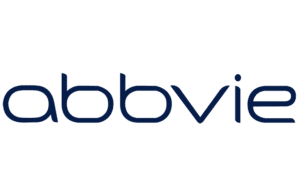 AbbVie Oncology (NYSE:ABBV) recently joined the Dare to Dream Project, an initiative of the Leukemia & Lymphoma Society (LLS) focused on improving the treatment of cancer patients. The initiative is designed to accelerate the development of novel treatments for pediatric blood cancers.
AbbVie Oncology (NYSE:ABBV) recently joined the Dare to Dream Project, an initiative of the Leukemia & Lymphoma Society (LLS) focused on improving the treatment of cancer patients. The initiative is designed to accelerate the development of novel treatments for pediatric blood cancers.
In the interview, Pooja Hingorani, the medical director of oncology early development at AbbVie, discusses the challenges and opportunities in early drug development for pediatric oncology.
Gauri Sunkersett, the associate medical director of pediatric oncology clinical development, discusses later-stage development. She emphasizes the need for innovative trial designs.
The responses have been lightly edited.
How would you characterize the Dare to Dream Project?

Gauri Sunkersett
Gauri Sunkersett: I think the perfect word to describe the Dare to Dream Project by LLS is “rewarding.” The project’s goal is to change the paradigm of treatment and care for pediatric blood cancers, emphasizing the importance of focusing on pediatric cancers. Having LLS partner up with AbbVie for this initiative is really important. In addition, they have launched the PedAL Master Clinical Trial, which focuses on pediatric acute leukemia, specifically pediatric acute myeloid leukemia. The PedAL initiative matches patients to treatment based on children’s unique cancer biology.
Pooja Hingorani: We still need to improve outcomes for these very challenging patients. One strategy is to use innovative trial designs such as master protocols. It is also vital to ensure collaboration between academia and industry partners.
Pediatric cancer is fortunately rare, but developing new drugs in pediatric cancer can be challenging as a result of the small patient numbers, especially for patients with relapsed or refractory cancer.
Can you say more about the challenges of developing new pediatric leukemia and lymphoma treatments?
Sunkersett: Developing new therapies specific to pediatrics is crucial because the one-size-fits-all approach does not work. It’s essential to develop new treatments specific to pediatrics.
One of the harsh realities is that most pediatric therapies, particularly in oncology, are not FDA-approved. They are often used off-label. This fact highlights the need to focus on providing safe and effective therapies with proven indications that have undergone proper testing within their specific indication. That involves the parent having a degree of trust in the oncologist. But also, as drug developers, we are responsible for doing better for our children. We need to provide them with safe and effective therapies for specific indications.
Another consideration in pediatrics is formulation. We must ensure that the drug is tolerable and that compliance is feasible. Not only do we need to provide the drug, but we should also make sure patients are taking it.
If anybody’s ever tried to give a child medication, they know how challenging that can be. It’s not just a matter of developing a drug for a targeted indication. We also need to make sure the drug has good tolerability so that compliance is there. That is something we are incorporating into the PedAL sub-trial. We are developing an oral formulation for Venetoclax and are testing its tolerability.

Pooja
Hingorani: Pediatric patients are unique. They are growing, so there can be challenges with certain drugs and targets regarding their growth and development. So you have to have specialized toxicity studies in that population.
When dosing chemotherapy agents in pediatrics, we often use body surface area for dosing. That’s different from how it is done in adults.
What are some traditional challenges in recruiting children for oncology clinical trials?
Sunkersett: Accrual is a huge challenge. That’s where these partnerships with LLS, other consortiums, and collaborative groups are essential because they allow us to conduct impactful trials and eventually deliver therapies to children. These diseases are historically rare, but they are not rare when they affect your own child. Partnering with industry leaders and organizations like LLS committed to making a difference is crucial.
Hingorani: Pediatric oncology trials have very low attrition rates and lose very few patients to follow-up. This is because there is a dearth of new therapies in pediatrics, and when these trials are available, patients and their families are eager to participate. They are desperate to try new therapies, particularly when they have exhausted other options. Patients will go above and beyond to accrue on these trials and will not stop taking their therapies if they are working. Thus, the challenge lies in having access to new therapies and having a broad base of sites and centers for accrual rather than losing patients to follow-up.
How did AbbVie get involved in the Dare to Dream Project?
Sunkersett: AbbVie has been developing the Venetoclax pipeline for several years, primarily in the adult space. But we have conducted several studies in the pediatric space with promising data. After evaluating safety, toxicity and efficacy in early studies, we identified acute myeloid leukemia (AML) as a clear indication of where Venetoclax can deliver better therapies for our pediatric patients. After doing our early studies, where we evaluated safety, toxicity and efficacy, we decided to proceed with a Phase 3 trial. We talked about some of the challenges we faced with recruitment and patient care access.
Why are targeted therapies in pediatric oncology important?
Hingorani: Historically, pediatric cancers had to rely on drugs originally developed for adult cancer treatments. While most conventional chemotherapy drugs work in many pediatric cancer types, including AML, there is still a significant percentage of patients who are not cured despite intense chemotherapy, including transplant. A significant number of patients will still relapse despite going through all of this toxicity. Now that the therapeutic landscape has become more targeted therapies, there is an opportunity to develop new pediatric therapies. Although children have different cancers than adults, some of the targets overlap. Therefore, it is crucial to take drugs initially developed for other cancer types, such as lung cancer, and test them in children to identify potential applications for pediatric cancer treatment. While the landscape is shifting, historically, there was no specific focus on developing drugs for pediatric cancer, which is why this is an important area of research.
Sunkersett: The oncology landscape is shifting from broad-reaching drugs used in cancer therapy decades ago, which killed all rapidly dividing cells, to targeted therapies that kill only specific cells unique to cancer. Accelerated and focused research in pediatrics helps us identify these targets, allowing us to deliver safer and more effective cures for our patients. It is crucial to conduct appropriate clinical trial settings so that they do have FDA approval behind it.
What do you find most rewarding about working in pediatric oncology now?
Sunkersett: It is a very exciting time. Our PedAL sub-trial is reaching over 20 countries. The trial includes the U.S. and extends to Australia to the Asia subcontinent. It is a global initiative, and we are thrilled to be a part of it.
Hingorani: Part of the impetus for developing pediatric cancer drugs is also coming from the changing regulatory landscape in the pediatric landscape in both the U.S. and the EU. Historically, drug development was indication-specific development. Pancreatic cancer, for example, doesn’t happen in kids. Companies, therefore, chose not to develop drugs for pediatric cancers that do not occur in adults. However, the shift towards a mechanism of action or target-based approach is changing this with similar mechanisms of action and targets across the spectrum of pediatric and adult cancers. Regulators are now prioritizing pediatric drug development. This shift is encouraging for the development of new pediatric cancer therapies.
What steps is AbbVie taking to consider pediatrics early on in the drug development process?
Sunkersett: AbbVie is committed to transforming the standards of care across blood cancers and advancing dynamic research across various indications. Recently, we achieved our first pediatric oncology approval for Imbruvica, a well-known cancer drug in the adult world, for chronic graft versus host disease in the transplant population. This milestone identifies us as a leader in pushing forward pediatric oncology research. We are also exploring other molecules for high-risk indications in the pediatric space.
Hingorani: From an oncology early development perspective, we are seeing a shift in the company’s mindset across discovery early-stage trials and late-stage trials. There is a recognition that for every new target or asset that enters our human adult trial, we have to consider pediatrics very early on in the drug development process.
Any closing thoughts on the Dare to Dream Project or anything else?
Hingorani: Sometimes it gets under-recognized in pediatric cancer is that people see those cure rate cards and say, oh, you know, the cure 80% of your pediatric cancer patients, which is great, but I think one also has to realize when these patients at a very young age get all these toxic therapies, most of them actually carry a huge lifetime burden. You know, more than 60% of the survivors will actually have what we call grade three or greater adverse events throughout their lives. The other aspect of pediatric oncology drugs, especially with our newer targeted approaches, is to shift to a more tolerable therapy landscape.
Sunkersett: Pediatric drug discovery is a partnership on so many different levels, from early- to late-stage drug discovery and development across the company.
The patients are the north star we have to always keep in mind. And keeping the patients and families at the center of everything we do is the ultimate goal and driving force behind our work in pediatric oncology. We want to keep them as our center of why we’re doing this. Patients are really what will keep driving us in the future.
Filed Under: Oncology





Tell Us What You Think!
You must be logged in to post a comment.